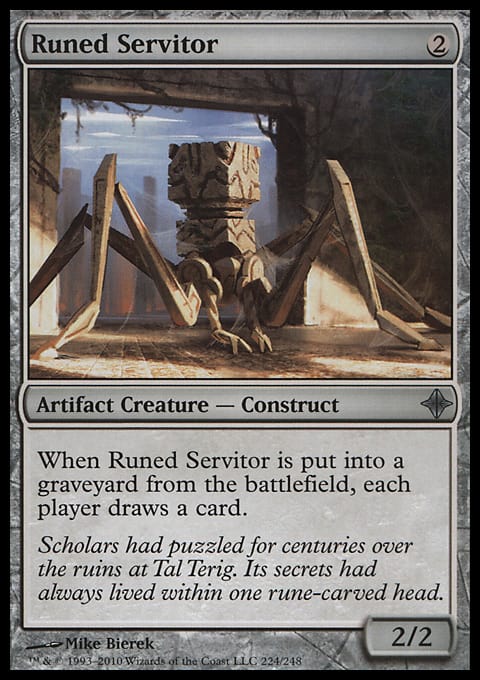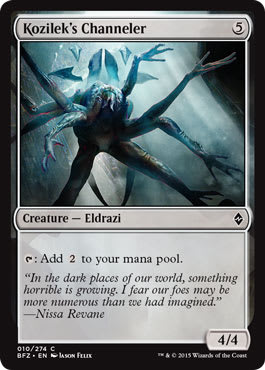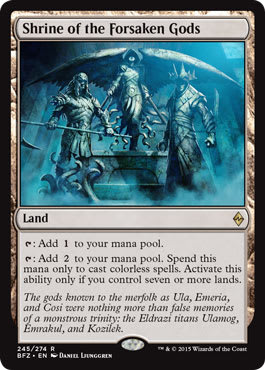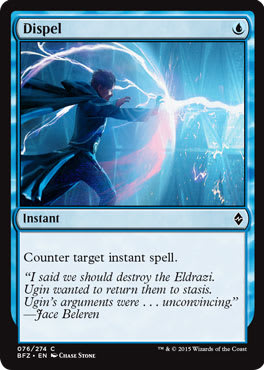For an adventure world to be successful, you must have some sense mystery, speculation, and discovery. When I first read through A Planeswalker’s Guide to Zendikar, each legend was fodder for speculation. Everything from teleportation runes under Murasa’s eastern walls to the monolithic heads referencing the Moai on Easter Island bounced around in my head for weeks at a time. I was ecstatic when Battle for Zendikar was announced, but I slowly came to the saddening realization: These pieces of legend would take, at best, backseat to story conflict with the otherworldly Eldrazi.
Battle for Zendikar spoilers continued to come out, and the chances of cards calling back to the old lore dwindled. Improvement came when The Art of Magic: The Gathering: Zendikar was announced at PAX Prime, but waiting months for canon answers is rarely the Vorthos way. With theories ready to convince, here are three of Zendikar’s greatest world-building mysteries revisited in detail.
Tal Terig
Appropriately referred to as "The Puzzle Tower," Tal Terig stands in front of what remains of the Teeth of Akoum mountain range. The two-hundred-foot-tall structure is composed of impossibly angled conglomerates, each stone varying greatly in both shape and size. Occasionally, the stones will shift or rearrange to manipulate and turn the spaces within. If an endlessly restructuring spire of rooms with priceless treasures and magical traps inside isn’t Zendikar, I don't know what is.

Original image found here.
Upon closer examination of Tal Terig, observers have experienced nosebleeds and headaches. While this bodily response is curious, it has been seen once more recently in “Nissa's Origin: Home” when Mazik's nose bleeds as he and Nissa trek through the Teeth of Akoum and closer to the "dark knot." If these are indeed symptoms of proximity to the Eldrazi titans, the question of how Tal Terig is connected to the titans becomes even more intriguing. As the canonicity of In the Teeth of Akoum continues to fall flat, the novel's reveal of The Puzzle Tower as an Eldrazi tomb site with "ancient weapons too deadly for the Eldrazi beasts" hidden inside should be taken with a full shaker of salt.
The Pillar Plains
Atop the many winding canyons where the Vazi River carved its way through the outer Murasan wall, kor once lived happily with their oxen. Bridges existed between the grassy pillar tops, networking paths for any who wished to enter the island continent without paying toll to Kazuul. Unfortunately, the kor bodies were found about twenty years ago, suspended by their grapples, and the passing trails have been abandoned out of fear. The "tortured kor ghosts” continue to dwell at the site with no sign of end.

Original image found here.
Trickery . . . deceit . . . Somebody fooled those kor into falling on their hooks. A Pillarfield Ox is nowhere near devious enough to force such violent acts, despite power and toughness matchup. The likely culprit has now been seen again, achieving an eerily similar feat in Battle for Zendikar.

Turn Against by Chris Rallis
Kozilek, Butcher of Truth, the titan who can warp reality, is turning adventurers against themselves or their allies. Obsidian shards are suspended above Nal's head, a clear display of Kozilek's influence on their mind. Cards like Kozilek's Channeler and Turn Against give evidence for his manipulation from the core of the world, but could The Pillar Plains slaughter still be a result of Kozilek’s trickery while the titan’s physical projection laid dormant?
The Strand of Jwar
Large stone heads litter both Jwar and nearby waters. A permanent rift in the aether, the material that comprises the space between planes, shines a blue pillar of light from the sky onto the small Onduan island. Many are fearful, some are curious, and very few recognize the nature of the energy. Dead buried on the shore, sacrifices to Zendikar, will completely disappear after some time. Where did such a planar oddity come from, and what purpose does it serve?

Jwar Isle Refuge by Cyril Van Der Haegen
An initial theory comes from the faduun. These stony heads are rumored to murmur in a language unknown to the Zendikari and remain as mysterious in purpose as the rift itself. If they are from another plane, as the proximity to the rift could suggest, the Strand could simply be a botched planar portal with continual energies from the aether pouring onto the island. An innocent Planeswalker trying to move the magical statues between planes forgets to close the door afterward, dooming an island to a brittle reality where anything can be pulled into the rift with enough time.
Another explanation could include the voice that Nissa hears as Lorwyn turned to Shadowmoor. The voice taunts her with the fears of failing Zendikar again, claims her struggles are futile against the Eldrazi threat, and finally tempts her to slip away into a changed identity on the plane of Shadowmoor.
The voice could simply be rummaging through her head as she prepares to planeswalk away, but none of those thoughts were at the front of her mind as The Great Aurora approached. If the voice was some entity who had a convenient window from which to view the events on Zendikar, a rift in the Blind Eternities, it’d be reasonable for that entity to recognize Nissa and recall the events that transpired.
Legends Never Die
For canon explanations to come in the lore book would be a true world-gift, but speculations on history and importance can hold us over until then. Do you have an explanation for any of these phenomenon? Include it in the comments, and happy planeswalking!





























